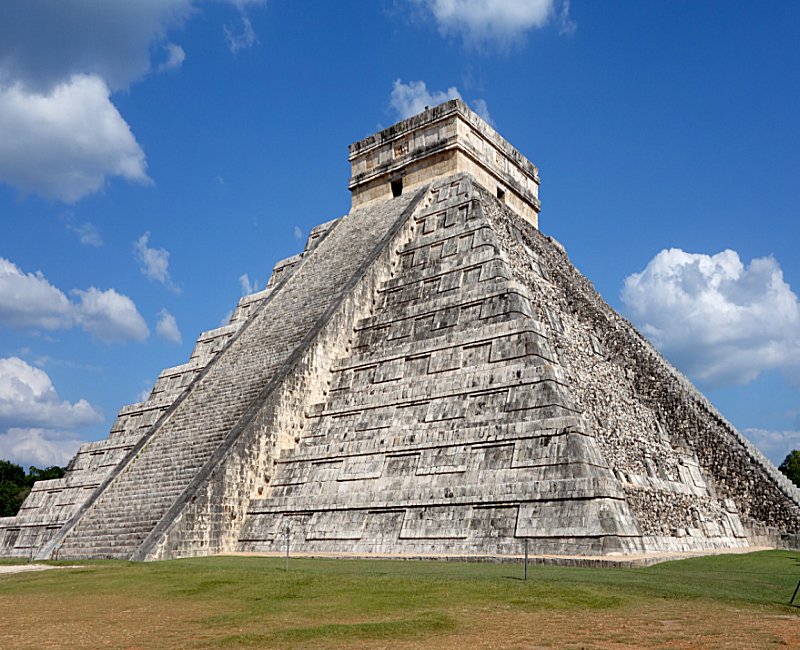Impressive Pyramid Of Kukulkan (El Castillo’) At Chichen Itza
A. Sutherland - AncientPages.com - The largest and most important structure of Chichen Itza is the KukulcanTemple (also known as ‘The Castle’ – El Castillo). It is the legacy of the Toltec overlords, whose culture had a profound influence on Chichen Itza.
Westside of the Temple of Kukulcan. Image credit: Luka Peternel - CC BY-SA 4.0
Chichen Itza, located in the north of the Yucatan Peninsula near the city of Valladolid, in Mexico, was one of the most important centers of the Mayan culture. It was founded about the sixth century, probably by the Maya peoples of the Yucatán Peninsula.
Impressive Pyramid Temple was dedicated to the Feathered Serpent, Quetzalcoatl (known among the Maya people as Kukulcan); this deity, ever-present at Chichen Itza, is of Central Mexican origin and assumed a distinguished position in the pantheons of Teotihuacan and Toltec Tula.
While it is relatively small, it has become one of the most famous pyramids in the world. This is due to the huge elegance, which ensured its symmetry making it even more beautiful.
The pyramid was built in the second half of the eleventh century or in the middle of the twelfth century. Interestingly, in its interior archaeologists discovered the remains of a similar pyramid built about a hundred years earlier.
It has a square base with sides of length 55 m (181 ft) and a height of 30 m (99 ft) and it is, therefore, very small compared to the pyramid of Cheops at Giza or the Pyramid of the Sun in Teotihuacan, Mexico.
Each side of the structure’s four sides has 91 steps, leading to the temple on top; along with the temple platform on top as the final “step”, totally 365 steps – the number of days in the solar year.
Nine terraces decorated with a meander motif, probably symbolize the writhing snake. On either side of each stairway, the terraces, which make 18 on each face of the pyramid; this equals the number of months in the Maya solar year (each month consisting of 20 days). On the sloping vertical faces of these terraces are 52 empty panels, representing the 52-year Calendar Round cycle required to bring the two Maya calendars.
Researchers used 3D imaging techniques to discover the structure, hidden beneath outer layers at the pyramid of Kukulkan at the Mayan ruins of Chichen Itza.
One of them is the heavenly (solar) 365-day calendar and another, the earthly, 260-day calendar related to rituals, which was most probably derived from the 9-month period of human gestation — into alignment.
Recently, researchers announced the discovery of a 10 m pyramid 10 meters tall (33 feet) inside two other structures that make up the pyramid also known as El Castillo, or the Castle.
During earlier archaeological diggings in the 1930s had already revealed one structure inside the pyramid containing a red jaguar throne decorated with jade.
A. Sutherland - AncientPages.com
More From Ancient Pages
-
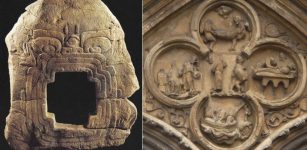 Quatrefoil Symbol Was Used By The Olmecs And Maya Long Before It Appeared On Christians Churches
Ancient Symbols | Mar 19, 2018
Quatrefoil Symbol Was Used By The Olmecs And Maya Long Before It Appeared On Christians Churches
Ancient Symbols | Mar 19, 2018 -
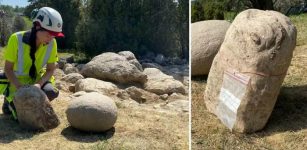 Unusual Discovery Of A Viking Age Phallic Stone In Tystberga, Sweden
Archaeology | Jun 12, 2023
Unusual Discovery Of A Viking Age Phallic Stone In Tystberga, Sweden
Archaeology | Jun 12, 2023 -
 Manticore – Legendary Persian Sphinx Whose Existence Is Still Discussed
Featured Stories | Jun 4, 2019
Manticore – Legendary Persian Sphinx Whose Existence Is Still Discussed
Featured Stories | Jun 4, 2019 -
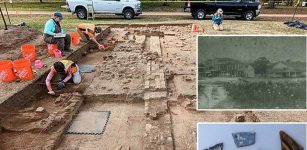 More Than 10,000 Artifacts Unearthed At The Birthplace Of Texas
Archaeology | Mar 12, 2024
More Than 10,000 Artifacts Unearthed At The Birthplace Of Texas
Archaeology | Mar 12, 2024 -
 During Tough Times Ancient ‘Tourists’ Sought Solace In Florida Oyster Feasts
Archaeology | May 4, 2020
During Tough Times Ancient ‘Tourists’ Sought Solace In Florida Oyster Feasts
Archaeology | May 4, 2020 -
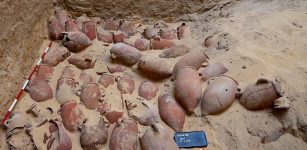 Largest Ancient Embalming Cachette Ever Found Unearthed At Abusir, Egypt
Archaeology | Feb 20, 2022
Largest Ancient Embalming Cachette Ever Found Unearthed At Abusir, Egypt
Archaeology | Feb 20, 2022 -
 Valley Temple At Giza: Great Masterwork Testifies To Remarkable Engineering Skills Of Megalith Builders
Ancient Technology | Jun 9, 2017
Valley Temple At Giza: Great Masterwork Testifies To Remarkable Engineering Skills Of Megalith Builders
Ancient Technology | Jun 9, 2017 -
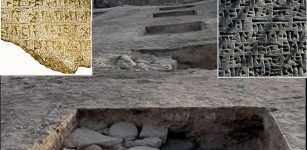 Monumental Structure Unearthed During Excavations Of Urartu-Era Karmir Blur
Archaeology | Nov 25, 2022
Monumental Structure Unearthed During Excavations Of Urartu-Era Karmir Blur
Archaeology | Nov 25, 2022 -
 Herne The Hunter – The Horned God And Lord Of The Forest In British Mythology
Featured Stories | Jan 12, 2016
Herne The Hunter – The Horned God And Lord Of The Forest In British Mythology
Featured Stories | Jan 12, 2016 -
 On This Day In History: Soviet Spacecraft Venera 7 Launched: First To Send Data From Venus To Earth – On Aug 17, 1970
News | Aug 17, 2016
On This Day In History: Soviet Spacecraft Venera 7 Launched: First To Send Data From Venus To Earth – On Aug 17, 1970
News | Aug 17, 2016 -
 On This Day In History: Sweden Declares War On Its Ally The United Kingdom – On Nov 17, 1810
News | Nov 17, 2016
On This Day In History: Sweden Declares War On Its Ally The United Kingdom – On Nov 17, 1810
News | Nov 17, 2016 -
 Why Are There No Unicorn Fossils In A Museum?
Archaeology | Mar 17, 2023
Why Are There No Unicorn Fossils In A Museum?
Archaeology | Mar 17, 2023 -
 Egyptian Necropolis Of Asyut And Funerary Culture That Dates Back To Old Kingdom
Archaeology | Feb 24, 2020
Egyptian Necropolis Of Asyut And Funerary Culture That Dates Back To Old Kingdom
Archaeology | Feb 24, 2020 -
 Evidence Of Yue – Ancient Chinese Criminal Punishment Found At Sanmenxia City
Archaeology | May 17, 2024
Evidence Of Yue – Ancient Chinese Criminal Punishment Found At Sanmenxia City
Archaeology | May 17, 2024 -
 Surprising Discovery Of Nabataean Underwater Temple In Puteoli, Italy
Archaeology | Sep 23, 2024
Surprising Discovery Of Nabataean Underwater Temple In Puteoli, Italy
Archaeology | Sep 23, 2024 -
 Museum Classifies Roman Emperor Elagabalus As Trans – But Modern Labels Oversimplify Ancient Gender Identities
Featured Stories | Nov 28, 2023
Museum Classifies Roman Emperor Elagabalus As Trans – But Modern Labels Oversimplify Ancient Gender Identities
Featured Stories | Nov 28, 2023 -
 Why Did Archaeologists Destroy Medieval King’s Wharf After Excavations?
Archaeology | May 17, 2023
Why Did Archaeologists Destroy Medieval King’s Wharf After Excavations?
Archaeology | May 17, 2023 -
 Mystery Of The Hidden Shoes Discovered In Ancient European Houses – What Is Behind This Bizarre Tradition?
Featured Stories | Oct 2, 2021
Mystery Of The Hidden Shoes Discovered In Ancient European Houses – What Is Behind This Bizarre Tradition?
Featured Stories | Oct 2, 2021 -
 New Insights Into The Dawn Of The Indo-European Languages
Linguistic Discoveries | Jul 27, 2023
New Insights Into The Dawn Of The Indo-European Languages
Linguistic Discoveries | Jul 27, 2023 -
 Climate Change May Have Impacted The Rise And Fall Of Middle Eastern Civilizations
Archaeology | Jan 19, 2023
Climate Change May Have Impacted The Rise And Fall Of Middle Eastern Civilizations
Archaeology | Jan 19, 2023

